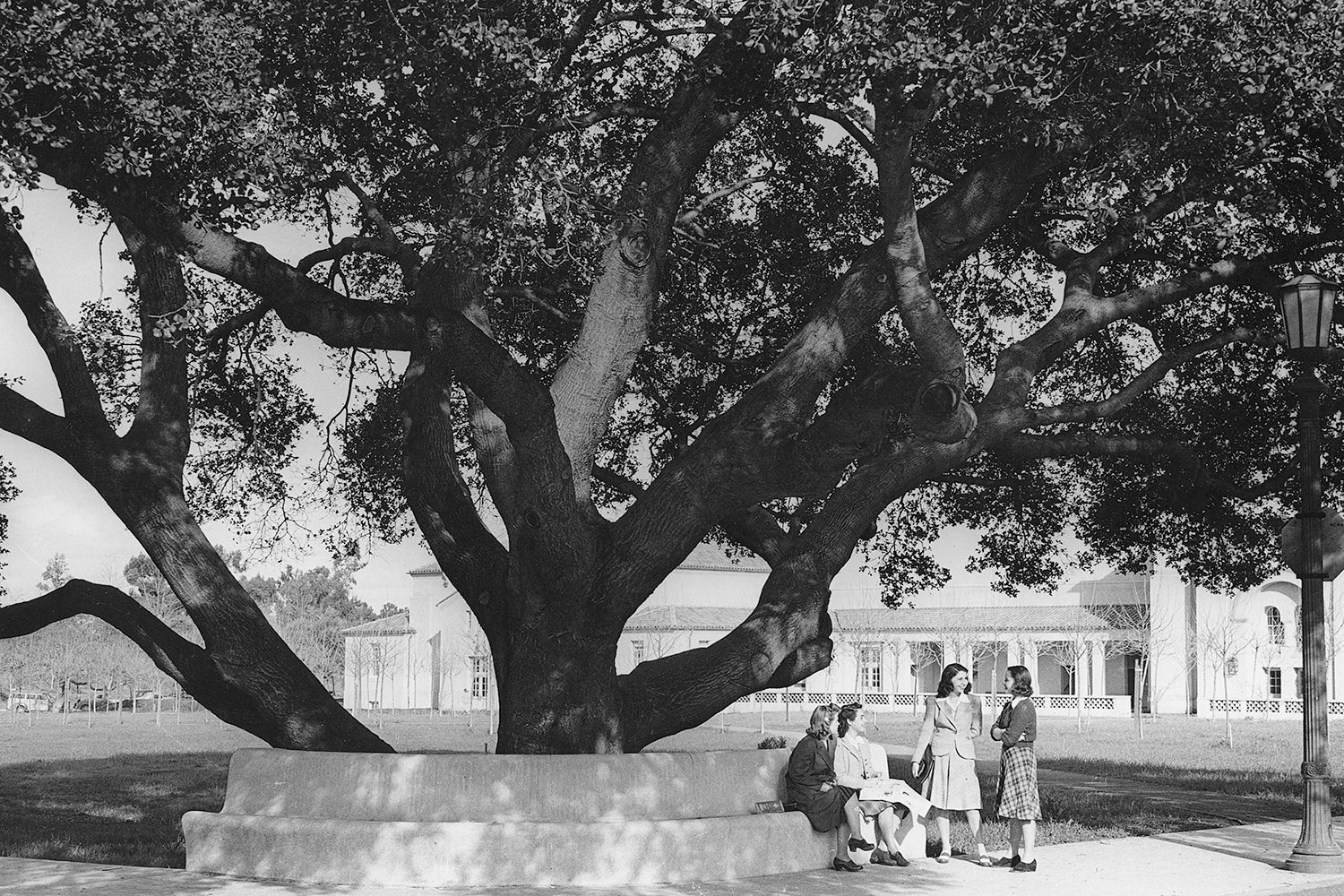Only the root system remains of Stanford’s last officially certified historic tree, which gradually collapsed branch by giant branch last month. But on the bright side, the Bicentennial Oak likely will return as furniture, souvenirs and other items befitting of a tree that lived for more than 200 years.

Large sections of the Alumni Oak, formerly known as the Pioneer Oak, collapsed last month. In this pre-1953 photograph, the limbs still stood high and the retaining wall that doubled as a bench was clearly visible. (Image credit: News Service Archives)
It won’t happen overnight, as the salvaging process will involve the curing and fabricating of wood from the fallen limbs and trunk, which could take years, according to Grounds Services Manager Herb Fong. But he points to the grand table in Green Library’s rotunda as an example of the possibilities for the remains of the coast live oak that long garnished the intersection of Serra and Lasuen malls.
That table is made almost entirely of wood from an even older oak that had been located next to the Stanford Family Mausoleum. After three centuries, that tree was taken down in 1993 because of disease.
Two large branches of the Bicentennial Oak dropped on June 5, followed by the fall of another major section two weeks later. The incidents didn’t injure anyone, and the only disruptions were temporary road blockages when the limbs came crashing down – and some startled looks from occupants in the Graduate School of Business and passersby in the general area.

Marlon Hernandez of Grounds Services worked on sectioning a branch of the Bicentennial Oak that fell across Serra Street on June 19. The prized coast live oak was Stanford’s last officially certified historic tree. (Image credit: L.A. Cicero)
In truth, the tree had significant structural impact to its root system for about the last half century, according to Fong. Over the years, cables had been used to hold up the sagging limbs and a putty-colored retaining wall that also served as a bench was built around the base.
The ability to turn the salvaged wood into furniture, and perhaps trinkets such as keychain pieces, will depend on its quality, according to Cathy Blake, assistant director in the University Architect/Planning Office.
In 1987, the National Arborist Association and the International Society of Arboriculture placed a plaque at the tree’s base that said the prized oak is believed to have been around at the time of the signing of the U.S. Constitution. According to Grounds Services, the tree was adopted in 1945 in place of the original Pioneer Oak (so dubbed by the Class of 1895) that was removed from its Inner Quad location to make way for expansion of the Quad arcade. The tree was renamed the Alumni Oak when the Business School building opened 20 years later.
Although campus planning and design staff are discussing next steps in the salvaging process, no immediate plans will be made for the corner where the stump and retaining wall remain. While construction on a new Business School campus is now getting under way, the future of the overall site occupied by the current GSB building is uncertain.